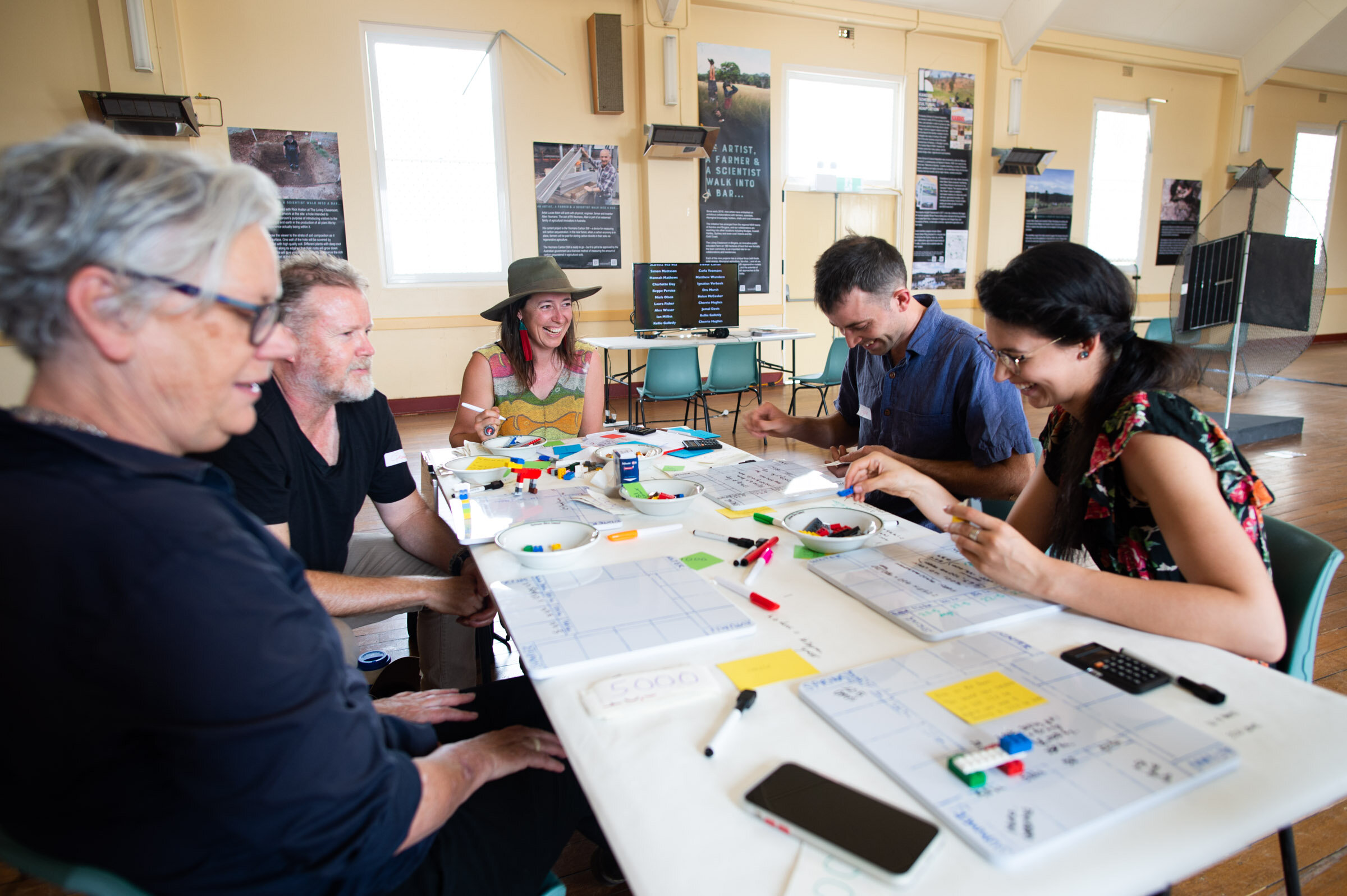Throughout 2019 I visited Dr Judi Earl at her farm Glen Orton in Coolatai as part of my ‘Farmers in Flux’ project. In a previous blog post I spoke about Judi’s goal of regenerating this degraded farm, blending her knowledge as a pasture ecologist and educator with her passion as a land manager to improve soil health and increase biodiversity. Judi carefully manages her cattle by moving them from paddock to paddock to prevent overgrazing. She also bunches them together not only to eat but also to trample the dominant Coolatai grass. This lays down protective groundcover and (along with their dung and urine) builds organic matter, creating the ideal conditions for new grass and broadleaf species to germinate and grow. Judi’s cattle are her tool to regenerate the land.
In the eight years that Judi has owned Glen Orton there have only been a handful of pasture growth events. The northern slopes of NSW used to experience frequent summer rain, but every year those rains are becoming far less reliable and so her windows for growing grass are shrinking. Judi believes that she is now farming in an increasingly arid environment where she can no longer assume that grazed grass will grow back.
This has huge implications for how she manages her pastures. At all costs, Judi works hard to avoid overgrazing, so that her paddocks always maintain a certain amount of grass. This provides the minimum requirements for the landscape and soil to function properly – to prevent erosion; to feed organisms above and below the ground which is important for building healthy soil; and so that rainfall can be captured by plants when it does fall. Most importantly she doesn’t want to graze out those new grass species which are delicately emerging across her landscape. So when there is no growth she has to make some hard decisions.
As the drought became more severe through 2019, Judi began setting thresholds for keeping grass in the system. She set important deadlines: if there had been no growth by a certain date Judi planned to sell the number of cattle required to avoid overgrazing what grass remained. Judi loves her cattle. They work hard for her, eating and trampling the dry and un-tasty Coolatai grass. She appreciates this with an unwavering level of care and kindness. Letting go of her livestock is heartbreaking, especially those she has bred. However, Judi has decided that the regeneration of her land is the top priority.
Judi is essentially playing a strategic game. She is setting the conditions needed to increase plant diversity and improve soil health, while at the same time coping with unreliable rain and the chance that financial hardship might send her backwards. I kept thinking about this blend of careful strategy with events beyond her control. On my final visit to Judi’s farm in Spring of 2019, we (along with a couple of bottles of wine) devised a game, the Grazing Game. And this is what I presented at Cementa Festival in Kandos in November 2019.
The aim of the game is to manage Judi’s 400 hectare farm and always maintain at least 1500 kg/ha of grass in the landscape (her minimum requirement). Every player starts with 150 cattle and $50 000 in the bank account, monopoly style. They start by planning to graze their cattle for a 3 month rotation around the farm paddocks. They need to work out how many cattle the farm could carry each season based on how much grass is currently in the system and how much grass they want to retain. Would they get rain and growth? That was something out of their control. If they didn’t want to graze so much, they could sell cattle back to me (at a market price which fluctuated with each player - I threw in an evil element of chance here). They also had to plan how many days to put the cattle in each paddock to avoid overgrazing. At the end of each season the player would draw a rainfall card, and if they had no rain (and hence no growth) they would have to sell more cattle or risk overgrazing their paddocks.
Every farm is a unique agro-ecosystem, and I enjoyed how this game allowed people to step into Judi’s unique story. Some described it as a cross between Squatter and Monopoly. For those who drew no rainfall cards, the experience of farming through a drought was very poignant. I had so many fascinating conversations with people at Cementa19 who sat down to play. A big question was “how on earth do people make money from this type of farming?” In Judi’s case she has not set out to make a profit… yet. Because how can you make a profit from land that is degraded? Judi’s aims are to get her farm to a point where it is functioning ecologically (that is, it has healthy water, carbon and nutrient cycles and diverse grasses, shrubs and trees). Then she will start to farm with the intention of actually making money. Farmers have different drivers and motivations for farming. But at the end of the day, if a farming landscape isn’t regenerating and giving back to you then you can’t expect to make money from it, especially over the long term.
Photo by Ian Hobbes
Judi and I hope to develop The Grazing Game as a tool for farmer education as well as for the general public. As I write this in early February 2020 the recent rains across Northern NSW have hardly fallen at Glen Orton. Judi’s difficult story continues but it’s a story of resilience and commitment to the land that I hope inspires the public and other farmers living through similar conditions.












